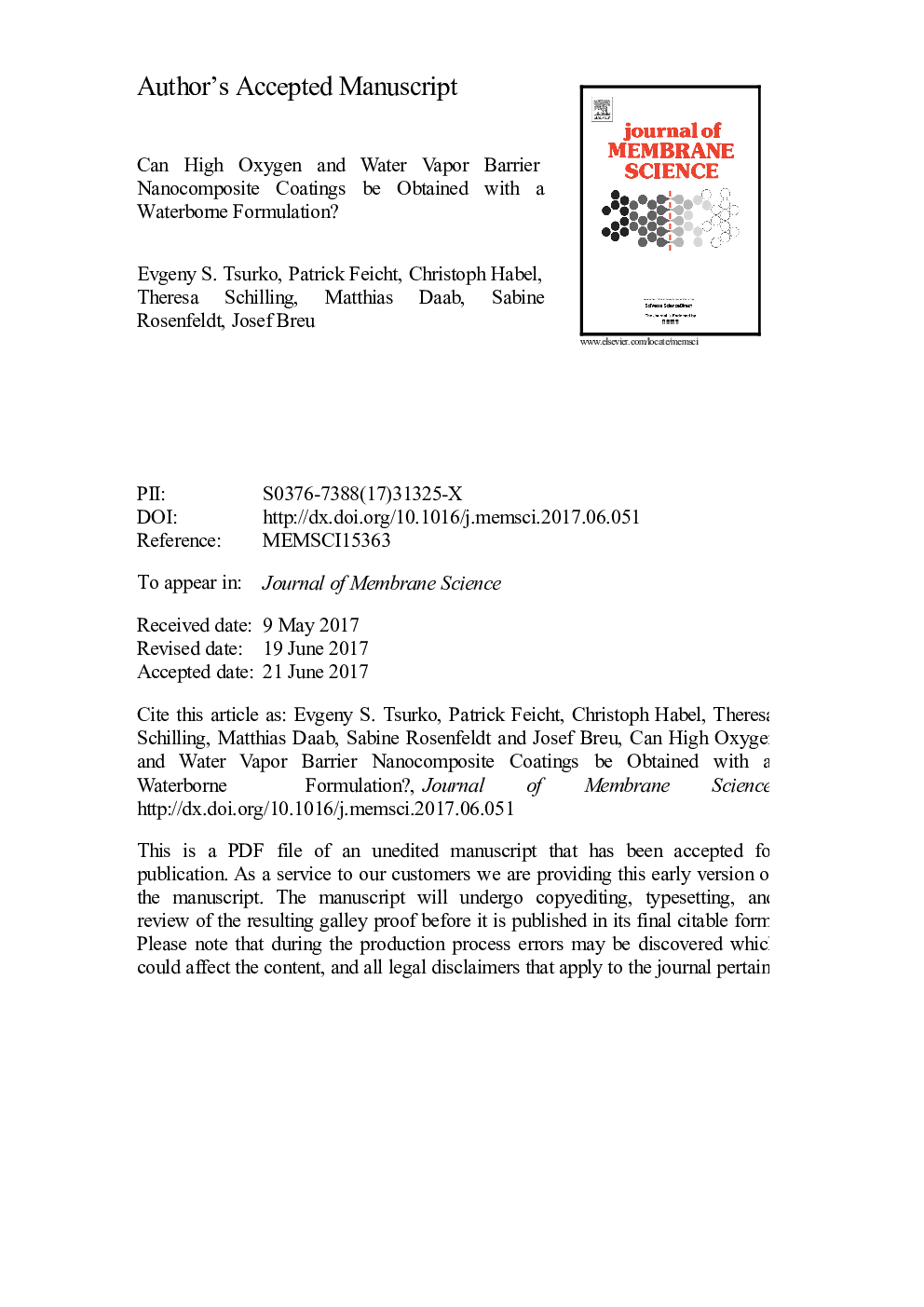| Article ID | Journal | Published Year | Pages | File Type |
|---|---|---|---|---|
| 4988689 | Journal of Membrane Science | 2017 | 20 Pages |
Abstract
Modification of synthetic, high aspect ratio clay with 6-aminocaprohydroxamic acid hydrochloride pushes the interaction between the polyvinyl alcohol (PVA) matrix and the filler to the level where the waterborne nanocomposite becomes rather insensitive to swelling, even at an elevated relative humidity (RH). The modifier can form strong hydrogen bonds with the hydroxyl groups of PVA via the hydroxamic acid functional group. This prevents the swelling of crystalline PVA domains. Perfectly textured nanocomposite films are obtained by spraying polymer-filler suspensions. The combination of the various effects shifts the onset of significant swelling of the nanocomposites to high RH regions. Even at 90% RH, surprisingly low oxygen and water vapor transmission rates (0.11 cm3 mâ2 dayâ1 barâ1 and 0.18 g mâ2 dayâ1, respectively, for a coating of 0.42 µm) are observed that may render PVA-based, waterborne coatings interesting for food packaging applications.
Related Topics
Physical Sciences and Engineering
Chemical Engineering
Filtration and Separation
Authors
Evgeny S. Tsurko, Patrick Feicht, Christoph Habel, Theresa Schilling, Matthias Daab, Sabine Rosenfeldt, Josef Breu,
